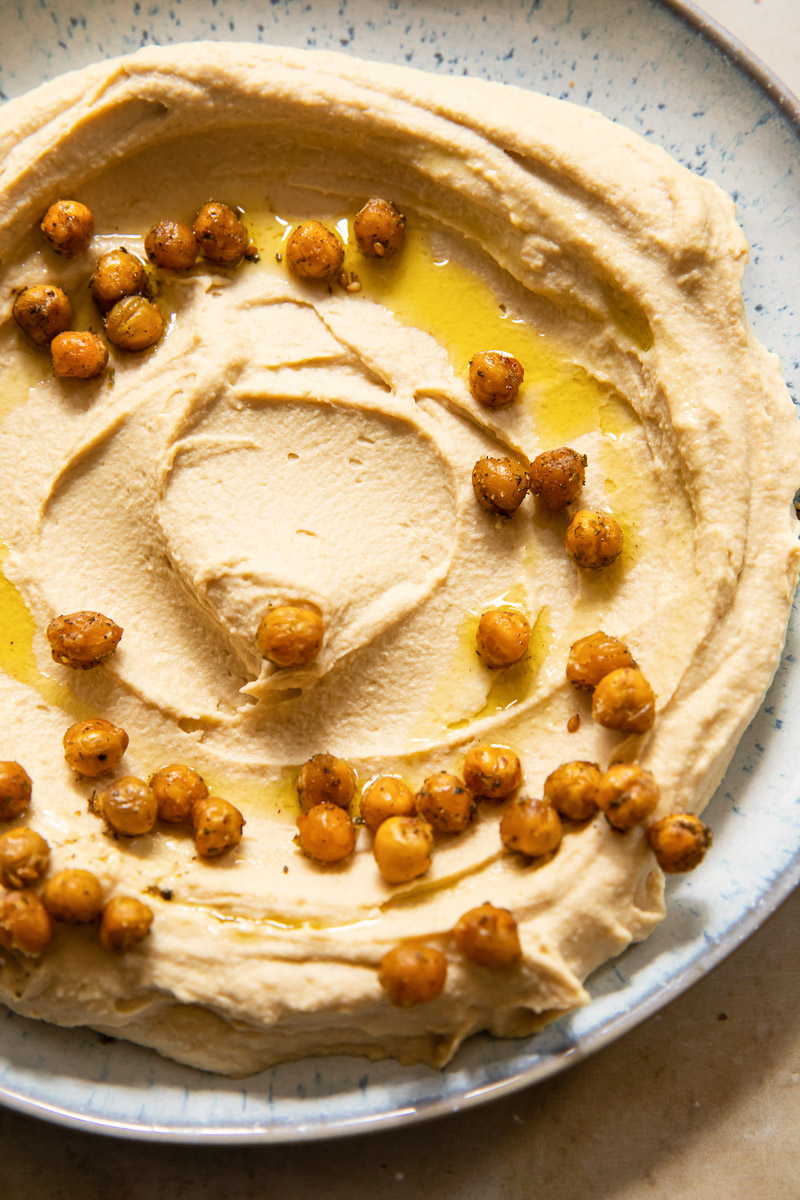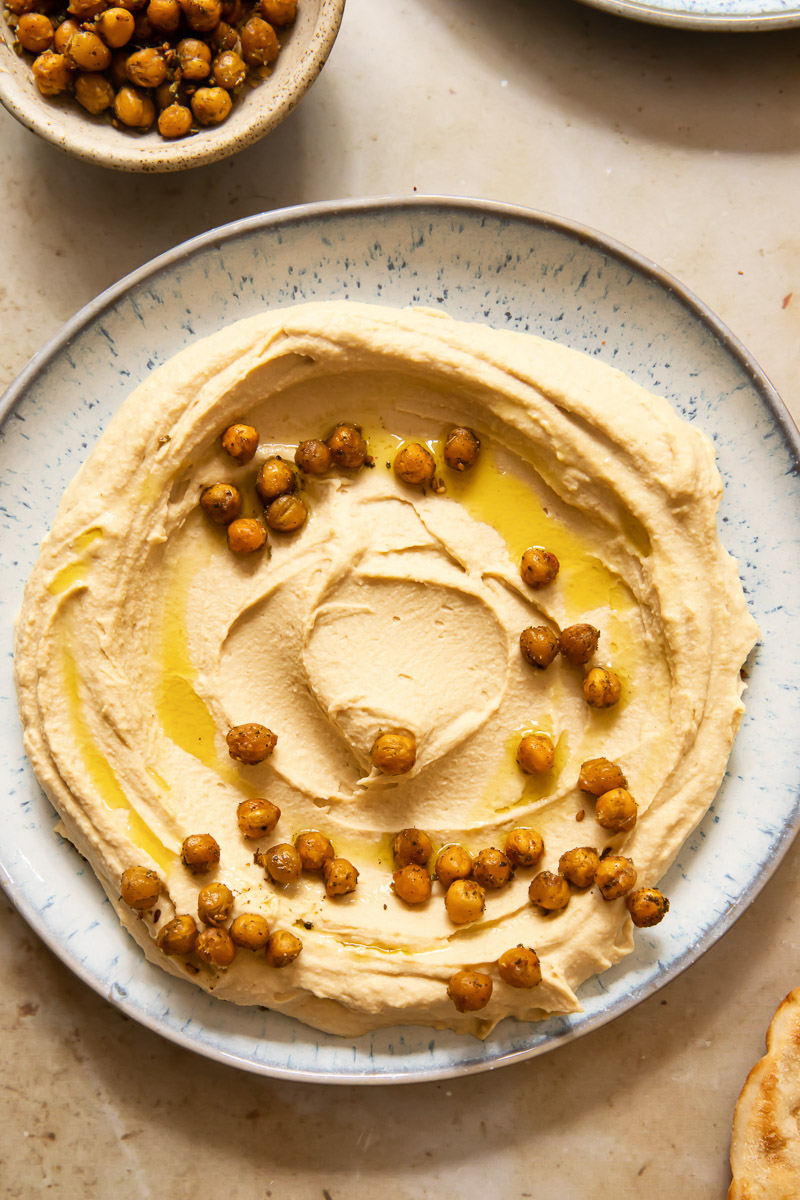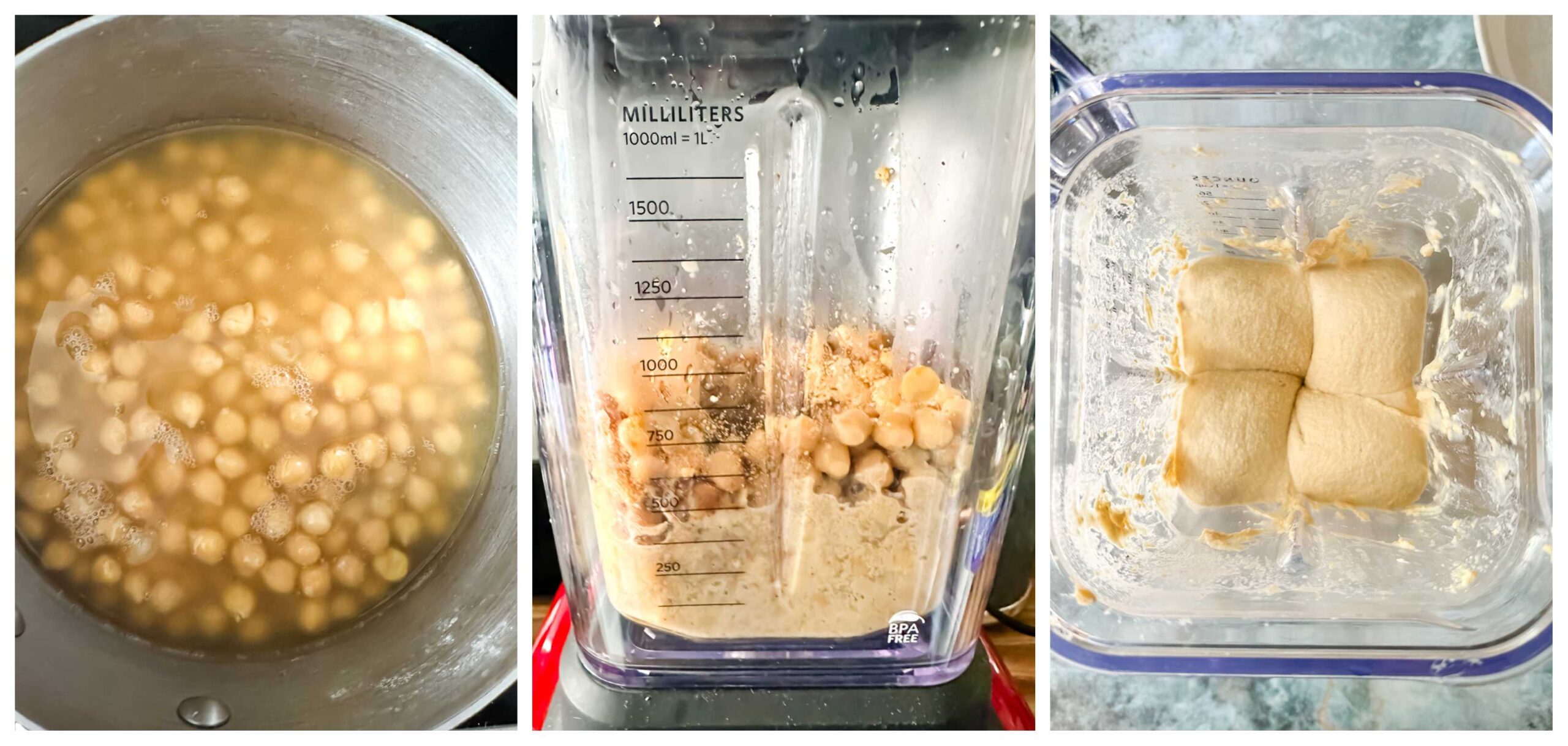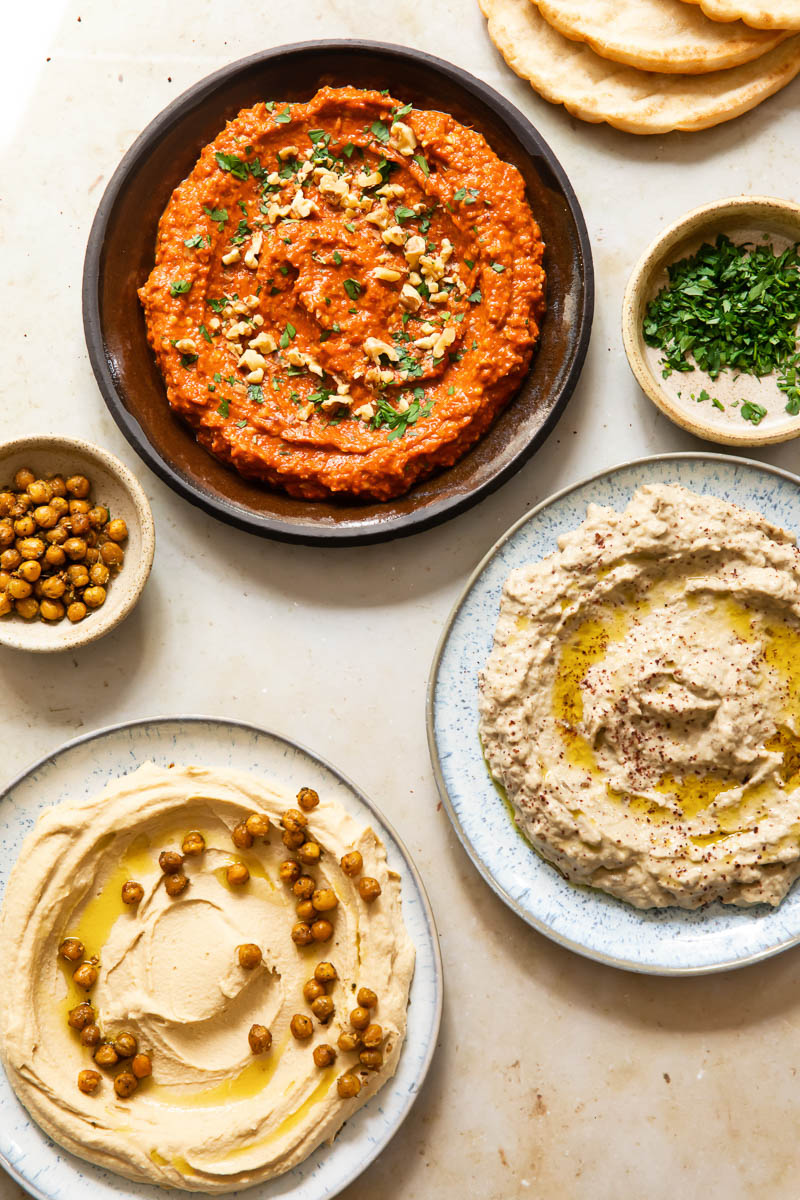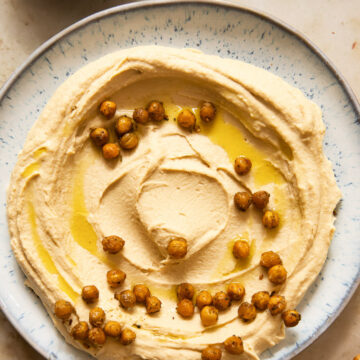Use this hummus recipe to make my Mediterranean salad with hummus and fried halloumi because summer salads are back! The mighty chickpea. A centuries old powerhouse of protein and flavour. Hummus is hands down my favourite chickpea recipe. My passion for which was recently rekindled on a trip to heartland of hummus, Israel.
Hummus and its origin
Who wouldn’t want to claim this famed creamy legume-based spread? Either boasting having invented it, or producing the best in the world, most easterly Mediterranean countries and Middle Eastern regions will lay claim to hummus dip. But it’s something of a geographical mystery. A hazy history means there is no definitive evidence pointing to hummus’ origins. The humble chickpea was first cultivated about 7500 years ago on lands that are now modern day Turkey, making it a pretty ancient pulse. But the first record of actual hummus dip wasn’t until 13th century Egypt. Personally, I can’t imagine the existence of chickpeas without hummus for all those thousands of years in between. What were they dipping their carrot sticks in?
Is it easy to make at home?
It couldn’t be simpler! The ingredients are all store cupboard staples; canned chick peas, cumin, garlic, lemon, olive oil and tahini. After cooking the chickpeas a little so they are tender, it all goes in the blender and you’re done. The hardest part is deciding how to eat it. Healthy homemade hummus makes for a quick snack; chips, or crudités, and dip, or as part of a bigger meal with a falafel salad bowl or chicken souvlaki.
What tahini to use
Tahini is a seed paste that can actually be used for so much more than just hummus; yoghurt dip, salad dressing, sauces, cookies, or even spread straight onto toast. With so many uses it is worth investing in a good quality jar. Here are a few tips: Other flavour-effecting factors are; the type of sesame seed (white humera are the premium), whether the seeds are ground hulled or unhulled (hulled is better as the product will be smoother), how long the seeds are roasted for, and how finely they are ground. But this information is not easily ascertained from a jar inspection. However, if you’re buying online you will have more intel and options. All research aside, finding a tahini you like is all down to taste. Don’t be afraid of a bit of trial and error. That’s the fun part after all!
Storage and leftovers
My house is never without hummus! I always batch cook it and keep some in fridge and freeze the lion’s share. It will still be at its best for 2-3 days in the fridge and up to 4 months in the freezer. Remember to portion out the hummus before freezing and allow 24 hours to thoroughly thaw. If you find the thawed texture a bit grainy or thick, add a little olive oil. If it seems a little bland, refresh it with a little lemon juice. Other Middle Eastern Recipes to Try:
Roast Chicken with Jerusalem Artichokes and Lemons Lemon Edamame and Butter Bean Hummus Middle Eastern Fattoush Salad Easy Flatbread Recipe Whipped Feta Dip with Pistachio Mint Pesto
